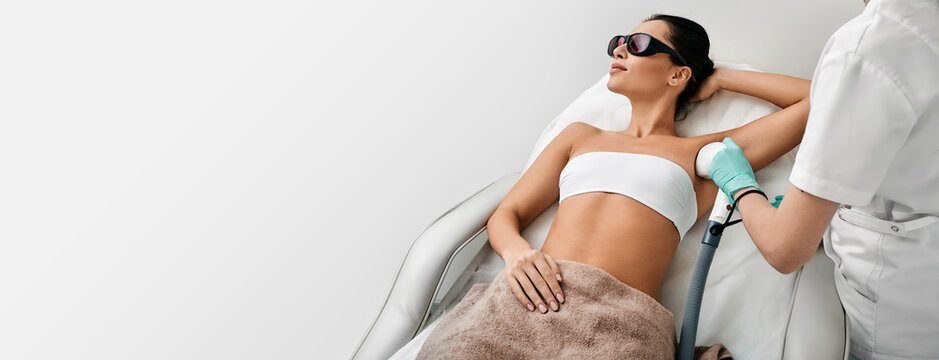Laser hair removal in riyadh is generally a safe and effective procedure, especially when performed by a qualified professional using appropriate technology. However, like any cosmetic treatment, there are potential side effects and safety considerations you should be aware of, particularly in a city like Riyadh where clinics cater to a wide range of skin types.

Key Safety Measures and Regulations in Riyadh
The Saudi Ministry of Health (MOH) has issued warnings in the past about unlicensed medical centers and individuals performing laser hair removal. This highlights the importance of choosing a reputable clinic.
- Licensed Clinics: Always choose a clinic that is officially licensed and has a strong reputation. Reputable clinics will have certified and experienced dermatologists or technicians who are trained in using laser technology.
- Medical Consultation: A key step for safety is the initial consultation. During this meeting, a qualified professional will review your medical history, including any medications you're taking or skin conditions you have. They'll also assess your skin and hair type to determine the safest and most effective laser for you.
- Protective Eyewear: Both the patient and the technician must wear appropriate eye protection to shield their eyes from the laser's intense light.
Common and Minor Side Effects
These side effects are typically temporary and subside within a few hours to a couple of days after the treatment.
- Redness and Swelling: The treated area may look and feel like it has a mild sunburn. This is a very common reaction and can be soothed with cool compresses or aloe vera gel.
- Mild Discomfort: The sensation during the procedure is often described as a warm pinprick or a rubber band snapping. While it can be uncomfortable, many people find it less painful than waxing.
- Acne Breakouts: In some cases, the skin may react with a minor breakout. Keeping the skin clean and hydrated with a mild cleanser can help.
More Serious (but Rare) Side Effects
These are less common, especially when the procedure is performed by a skilled professional. They are often linked to improper laser settings, lack of sun protection, or a mismatch between the laser type and skin tone.
- Pigment Changes: Laser hair removal can, in rare cases, cause the skin to lighten (hypopigmentation) or darken (hyperpigmentation). This risk is higher for individuals with darker skin tones or those who do not avoid sun exposure before and after treatment.
- Blisters and Burns: If the laser's energy is too high for your skin type, or if you have a recent tan, it can cause blisters or burns.
- Scarring: While extremely rare, scarring is a possible risk if the skin is damaged by the laser.
- Herpes Outbreaks: For individuals prone to cold sores or genital herpes, the heat from the laser can trigger an outbreak.
Safety for Darker Skin Tones
Given Riyadh's diverse population, many clinics are well-equipped to treat darker skin tones safely. However, it's crucial to be cautious.
- Nd:YAG Laser: For darker skin (Fitzpatrick Skin Types IV-VI), the Nd:YAG laser (1064nm wavelength) is the safest and most effective choice. Its longer wavelength allows it to penetrate deeper, targeting the hair follicle without damaging the surrounding melanin-rich skin.
- Practitioner Expertise: It is vital to choose a practitioner with specific experience in treating darker skin. They will perform a patch test to determine the correct laser settings and ensure there is no adverse reaction.
How to Minimize Risks and Side Effects
Following pre- and post-treatment instructions is crucial for a safe and effective experience.
- Before Treatment:
- Avoid Sun Exposure: Stay out of the sun and avoid tanning beds for at least six weeks before your session. A tan can increase the risk of burns.
- No Plucking or Waxing: The laser targets the hair root, so avoid these methods for six weeks prior. Shave the area the day before to allow the laser to target the follicle without burning surface hair.
- After Treatment:
- Sun Protection: For at least a month after your session, avoid direct sunlight and use a broad-spectrum SPF 30+ sunscreen daily on the treated area.
- Avoid Heat: Stay away from hot showers, saunas, and strenuous exercise for at least 24 hours.
- Gentle Care: Do not pick or scratch the treated area. Use cool compresses as needed to relieve any redness or swelling.




Comments